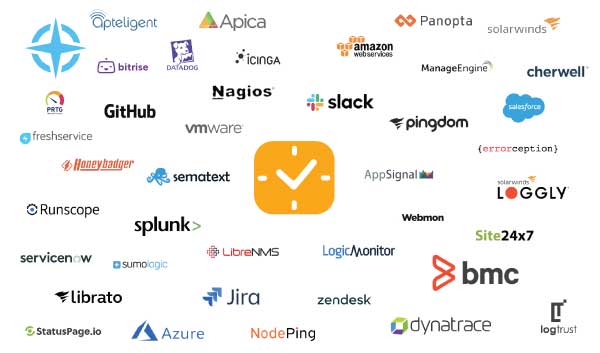A continuous integration and delivery (CI/CD) pipeline is a software strategy that empowers organizations to accelerate the delivery of new features to end users. This pipeline for software development drives automation.
With a CI/CD pipeline in place, software developers ensure code is automatically tested any time it is changed. Thus, software developers can capitalize on unparalleled quality control and automation to keep pace in a fast, agile global marketplace.
Of course, a CI/CD pipeline can make a world of difference relative to product development too. If an organization develops an effective CI/CD pipeline, it should have no trouble managing the flow of information between different systems. Perhaps most important, this organization can automate data communication, leading to faster, more efficient product development than ever before.
Let’s not forget about the importance of a CI/CD pipeline for DevOps teams, either. Thanks to a this pipeline, a DevOps team can establish continuous delivery and flow of information. Therefore, this DevOps team can prioritize assignments and alerts.
Building a modern CI/CD pipeline is no small feat. Fortunately, we’re here to help you craft an effective CI/CD pipeline that ensures your DevOps team can maximize its productivity.
Now, let’s take a look at five tips to help you create a modern CI/CD pipeline.
- Prioritize Team Management
If an outage occurs, you need to be able to immediately notify various DevOps team members. However, an ineffective CI/CD pipeline may make it tough to ensure the right DevOps team members are notified as quickly as possible.
Ultimately, it helps to prioritize team management as you search for ways to enhance your CI/CD pipeline. If you establish an effective CI/CD pipeline, you can make it easy for DevOps team members to manage alerts, create service tickets and much more.
Alert escalation and incident management software may prove to be a key part of a CI/CD pipeline. This software empowers DevOps team members to stay in contact with one another until an incident is fully resolved. Plus, the software offers instant access to on-call schedules and alerts via web or mobile apps, ensuring DevOps team members can quickly respond to notifications.
- Simplify Communication
Oftentimes, all DevOps team members will receive a message, even if the notification is irrelevant to certain recipients. When this happens, some DevOps team members may start to ignore certain notifications. And over time, alert fatigue may put an organization, its brand reputation and its revenues at risk.
Alert fatigue occurs when DevOps team members are overwhelmed by the sheer volume of alerts and begin to ignore critical notifications. As such, it may lead DevOps team members to overlook alerts related to downtime and outages.
To create a modern CI/CD pipeline, DevOps teams need fast, efficient communications. Because if DevOps team members struggle to stay in touch with one another, an organization, its employees and its customers may suffer the consequences.
State-of-the-art tools are available to help DevOps teams ensure the right team member gets the right messages time and time again. For example, DevOps teams can use alerting and incident management software to see who is available to respond if a critical incident occurs. As a result, DevOps teams can use this software to maintain constant communication to limit the impact of downtime and outages.
- Connect Your Systems
A DevOps team may use a wide range of systems on a daily basis. Yet making it simple for DevOps team members to leverage these systems in conjunction with one another can be difficult.
Typically, a modern CI/CD pipeline empowers DevOps team members to connect systems and create message flows between them. The pipeline must ensure a DevOps team can automate data communication, regardless of whether this team uses HipChat, Jira, Slack or other collaboration tools.
The right alert escalation and incident management software offers a combination of pre-built and outbound integrations. By doing so, the software enables DevOps teams to standardize their alert notification flows and responses and view all alerts in a single location. DevOps teams can even use the software to create two-way integrations and workflows.
- Customize Your Configuration
The DevOps team at a mid-sized business is unlikely to have the budget and resources of the DevOps team at a major corporation. At the same time, these two respective DevOps teams are unlikely to have identical CI/CD pipelines too.
A modern CI/CD pipeline should be customized to the needs of a DevOps team. If a DevOps team considers its day-to-day responsibilities, it can develop a CI/CD pipeline to manage these tasks.
Furthermore, a DevOps team can use alert escalation and incident management software to customize its CI/CD pipeline. With this software, a DevOps team can tailor its communications to its team members. The software also ensures DevOps team members can receive loud alerts (email, SMS, phone and push notifications) for critical-priority situations and quiet alerts (email notifications) for low-priority situations.
- Perform Regular Testing
A CI/CD pipeline generally produces metrics that a DevOps team must analyze. Otherwise, if a DevOps team fails to perform regular data analysis, it risks missing out on opportunities to boost its productivity and efficiency.
It usually is a good idea to look beyond “basic” metrics. A DevOps team that looks closely at all of the information at its disposal can identify patterns and trends within the data itself. Then, the DevOps team can use this information to understand why problems are happening and brainstorm solutions to these issues.
Periodic testing can have far-flung effects on a DevOps team as well. Testing ensures a DevOps team can identify potential issues and correct them before they escalate, thereby reducing the risk of costly, time-intensive downtime and outages.
Software that delivers incident alerting and management capabilities and reporting and analytics capabilities can help DevOps teams get the most out of data. This software enables DevOps teams to track service-level agreement (SLA) violations, average incident resolution time and other critical metrics on a weekly, monthly, quarterly or annual basis. That way, DevOps teams can assess contractors, adjust staffing levels and budget properly.
A modern CI/CD pipeline is essential for DevOps teams. It helps these teams stay on track with day-to-day tasks and achieve the best-possible results. On the other hand, few DevOps teams understand what it takes to maximize the value of their CI/CD pipeline. Without the right software to track alerts and incidents, it may be virtually impossible for DevOps teams to do just that.
When it comes to creating a modern CI/CD pipeline, alert escalation and incident management software is paramount. This software enables DevOps team members to communicate with one another and quickly address downtime and outages. If a DevOps team incorporates software to monitor alerts and analyze incidents into its CI/CD pipeline, it can further speed up and improve its everyday workflows.







